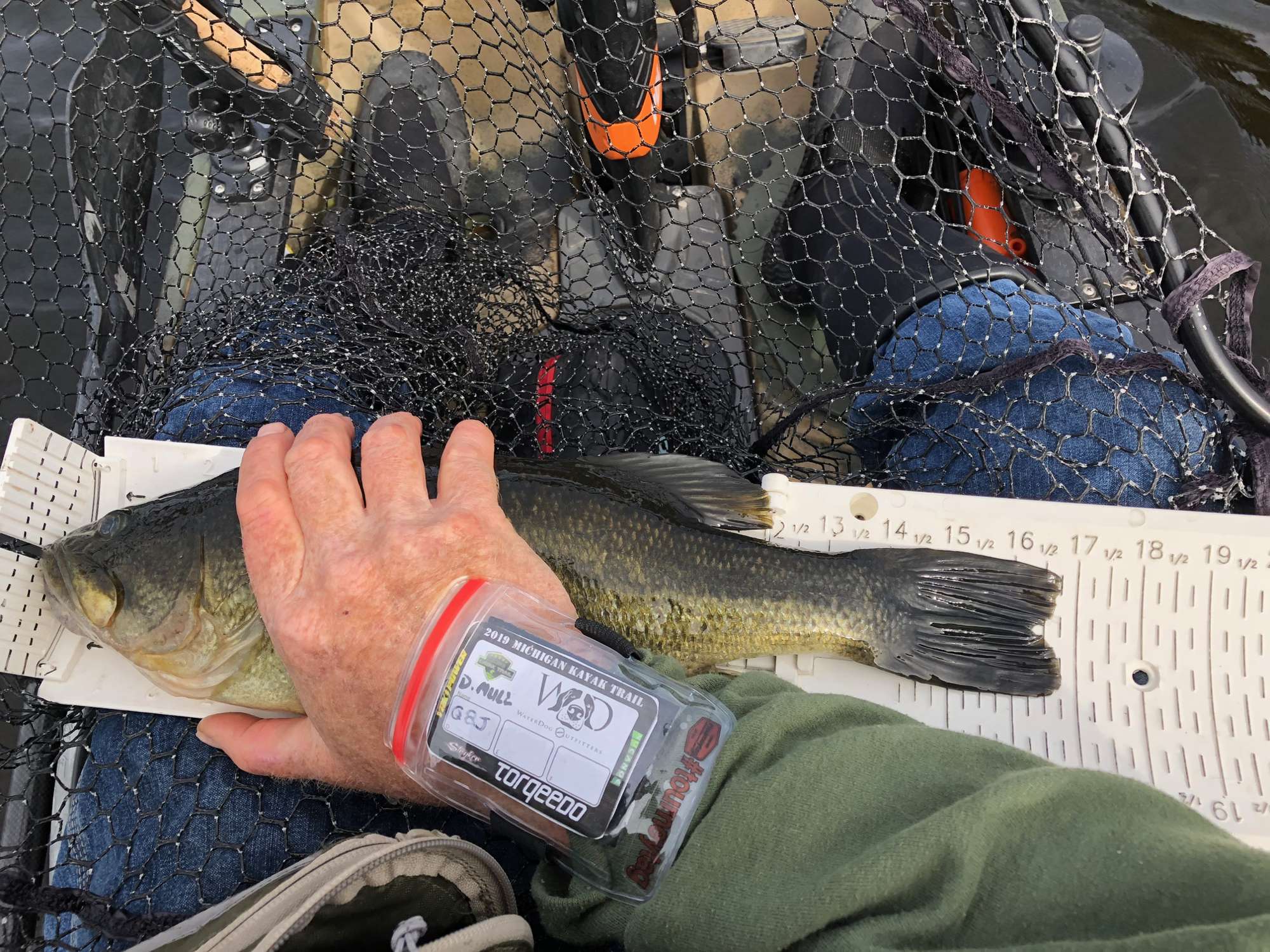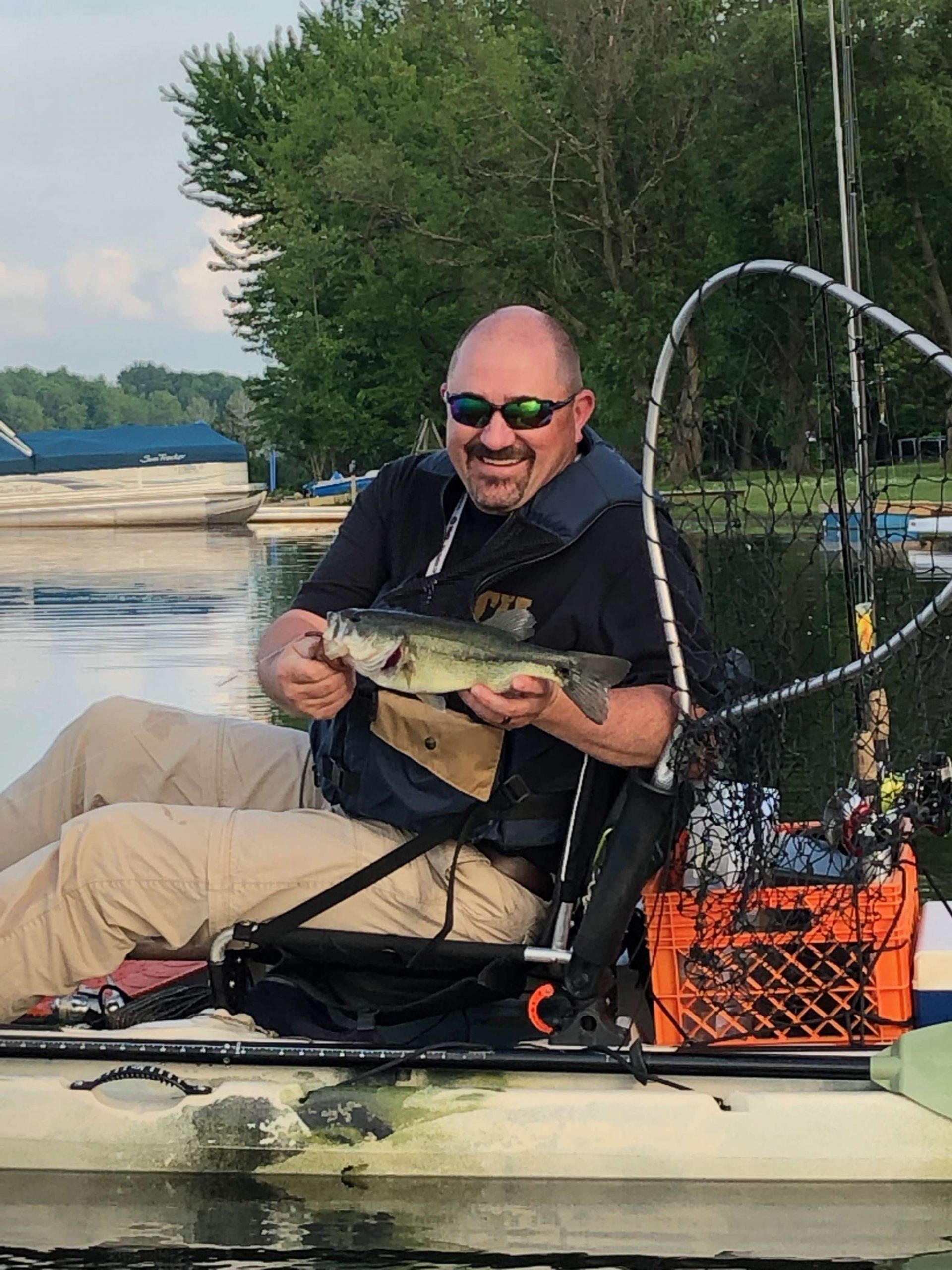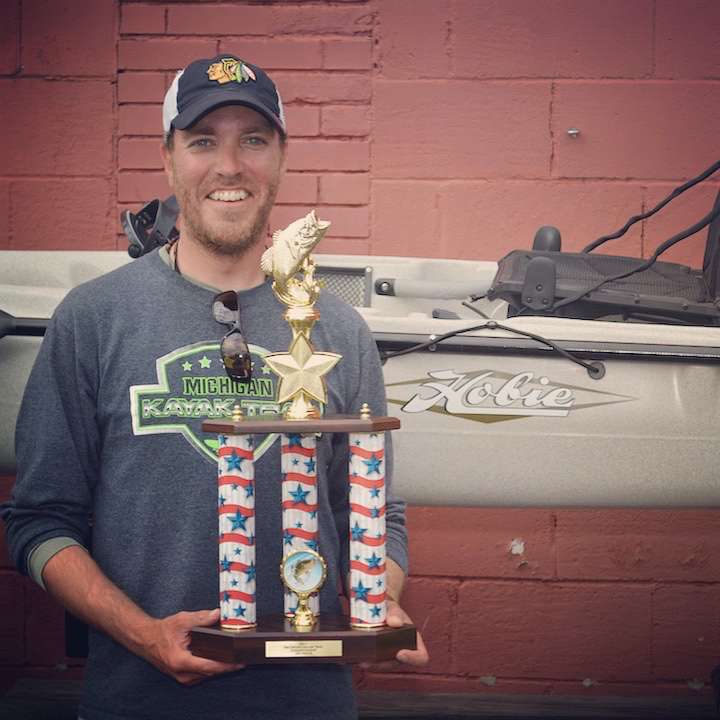
“So, where’s your livewell?” asked the ol’ boy from the front platform of his bass boat upon learning that I was in a kayak bass tournament with my plastic 13-footer. He was fishing the same ledge as I was on Kentucky Lake.
“Don’t have one,” I replied. “Right after we catch a bass, we put it on this Hawg Trough ruler, take its picture with our phone and put the fish back in the lake. Then we upload the picture to a tournament website. The website tallies everybody’s catch and puts the standings up on a live leaderboard. We can actually check and see who’s winning and what place we’re in while we’re on the water.”
“Well ain’t that cool!” the bass man said as he juiced his bowmount trolling motor and eased on down the rocky shelf.
Measuring and photographing the catch and scorekeeping in cyberspace are just a couple of places where kayak contests diverge from traditional bass boat tournaments. With the inaugural Huk Bassmaster B.A.S.S. Nation Kayak Series powered by TourneyX presented by Abu Garcia tournaments set to begin in March, here are some of the kayak contests’ aspects that are unique, and some skills kayak bass anglers can acquire to stay competitive.
Measure and photo
Most tournaments allow anglers to use their choice of three different measuring devices: The Hawg Trough ($19.99), a YakGear Fish Stick ($33.99) and the Ketch Board ($59.99) from Ketch Products. The first two are plastic and usually require the angler to mark the measurement lines with a Sharpie. The Ketch Board is metal with a plastic cradle and comes with measurement lines and numbers engraved in the metal.
Taking a picture of a freshly caught bass on their lap in a narrow kayak is something that anglers need to practice. It’s not all that easy and fish sometimes scoot to freedom before the angler can snap a picture. Upon catching a keeper bass, most experienced anglers unhook it and leave it in the landing net at boat-side or attach it to Fish Grips on a length of cord and leave the fish in the water. The angler then readies his phone, ruler and — highly important — the tournament identifier. That last item is usually a card with the angler’s name and “code” of three or four letters and numbers released the night prior to the tournament. The unique identifier code helps ensure anglers caught the fish they submit on tournament day. The identifier must be in the photo for the fish to be accepted.
Anglers then wet the board, hold the fish on the board with one hand, making sure the pectoral is pointed back towards the fish’s tail, which helps the fish relax. Then they take the picture, phone in the other hand.
Rules specific to different tournaments allow the fish’s mouth to be open or require it be closed. A common rookie mistake is to only take one picture of the fish and not check it for focus and that the whole fish and identifier was in the frame. Experienced anglers often take several pictures and put the fish back in the net or on the tether and in the water to make sure they have a picture the judges will find easy to judge. Then they let the fish go.

Young anglers
Another place kayak tournaments veer from traditional bass boat contests is the age of anglers. With signed, parental permission, anglers 12 years old and sometimes even younger are allowed to compete against adults — and sometimes they win.
Captains meeting
Virtual is the word. While some tournaments still require participants to physically attend a captains meeting to go over rules the night before or morning of a tournament, many tournament directors now just go live on Facebook. Participants can watch and submit questions and concerns.
Judges are watching
One common rule is to keep your phone’s GPS location engaged so judges know you are catching fish where you’re supposed to be fishing.
GPS location also allows anglers fishing large impoundments and lakes to launch from their choice of access sites instead of from the same ramp. Judges check the location stamp on photos.
Most tournaments have an official start time when kayaks can be launched and a later time when lures can hit the water. All fish pictures must be submitted to the tournament website by a predetermined time or the site simply does not accept them.
Instead of paddling or pedaling long distances on large bodies of water, anglers usually are allowed to put their yaks on the trailer or back in the vehicle and drive to another location to relaunch. Loading the kayak quickly and launching efficiently are other skills many good tournament anglers practice.
Boat qualification
Competition kayaks range from small paddle-powered boats to more expensive pedal-powered boats to even more expensive rigs with electric motors. Yes, many tournaments allow electric motors. Many anglers enjoy using motors, even though there’s no real evidence they give a significant advantage as most tournaments limit the motors’ size. In fact, Dwayne Taff of Huffman, Texas, won the 2018 Kayak Bass Fishing National Championship with more inches than 750 other contestants on Kentucky Lake over two days. He paddled his way to a $100,000 top prize.

Most contests require participants to fish solo, from kayaks, as opposed to canoes or john boats. Few tourneys allow two anglers to share a tandem kayak.
Suspense
Most kayak tournaments add to the “measure-in” suspense by stopping access to the standings a half hour to two hours before official lines-out time. That way, only the judges know who actually won until the awards are presented.
While some anglers “sandbag” by not submitting their catch until the leader board goes dark, this behavior is generally frowned on by fellow participants. Some tournaments have hourly big fish prizes to encourage anglers to submit their fish as soon as they catch, photograph and release them.

Rules
Probably the most important, zero-tolerance tournament rule common among yak competitions is that participants must wear a personal flotation device (PFD) whenever they are on the water. The PFD can be a standard foam-filled vest model or an inflatable. In most tournaments, anyone reported to be fishing without one is immediately disqualified from that contest.
Some tournaments also enforce state rules that cover fishing before dawn or after sundown — the kayaks must have a light that can be seen from any direction. Being on the water in the dark without one can be grounds for disqualification, too.
Another rule dictates how big a bass must be to be submitted. Since yak tournament fish are immediately released, many tournaments allow anglers to count fish shorter than a state’s minimum size. Don’t let this happen to you: One friend in his first kayak tournament didn’t carefully read the rules and let several 12- and 13-inch fish go, assuming they had to be Michigan’s minimum size of 14 inches. He likely would have finished in the money.
Other rules vary tournament circuit to tournament circuit. Some contests don’t allow anglers to talk to each other and share information. Some don’t allow anglers to call or text each other on their phones. The bottom line is, anglers need to familiarize themselves with each tournament’s rules.
Although the equipment, procedure and rules are different when you compare kayaks contests to bass boat tournaments, anglers in either kind of competition still share the same goal: Catch a bigger limit of fish than everyone else.
